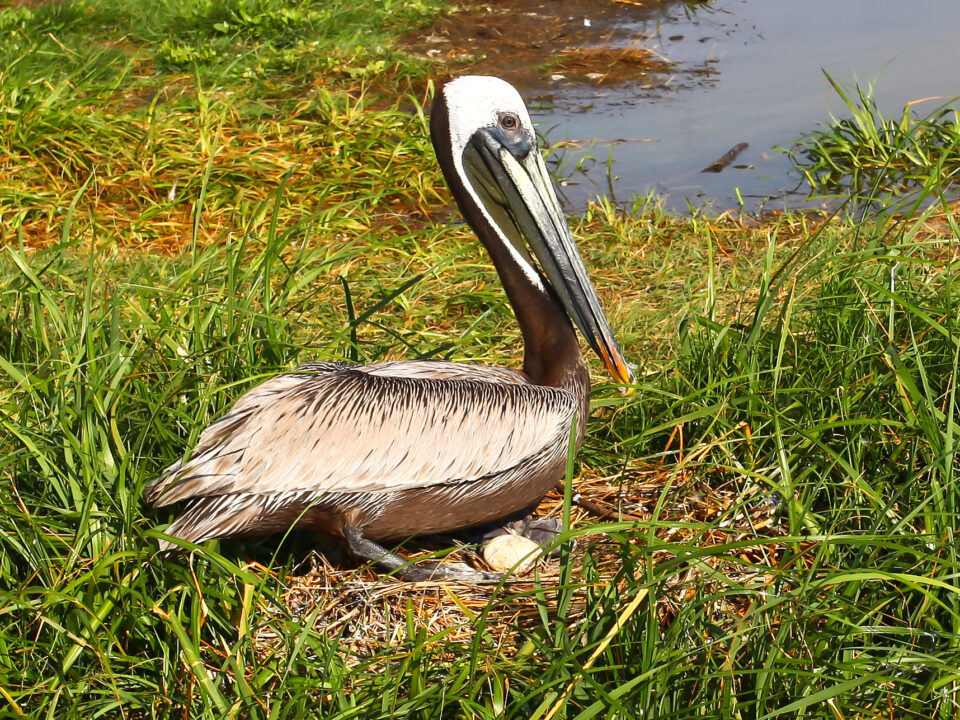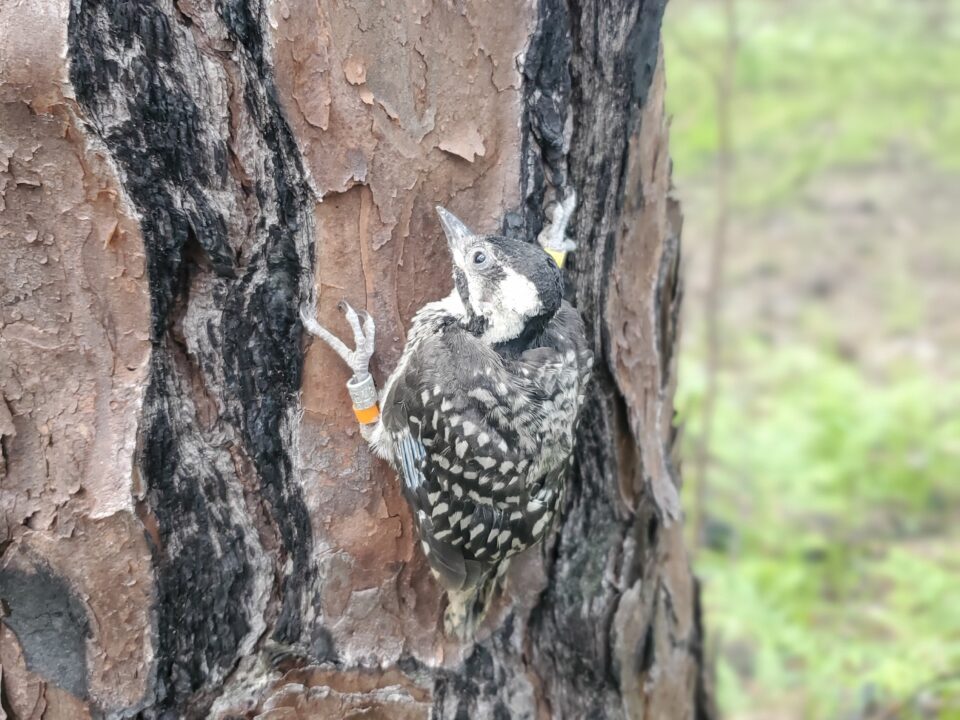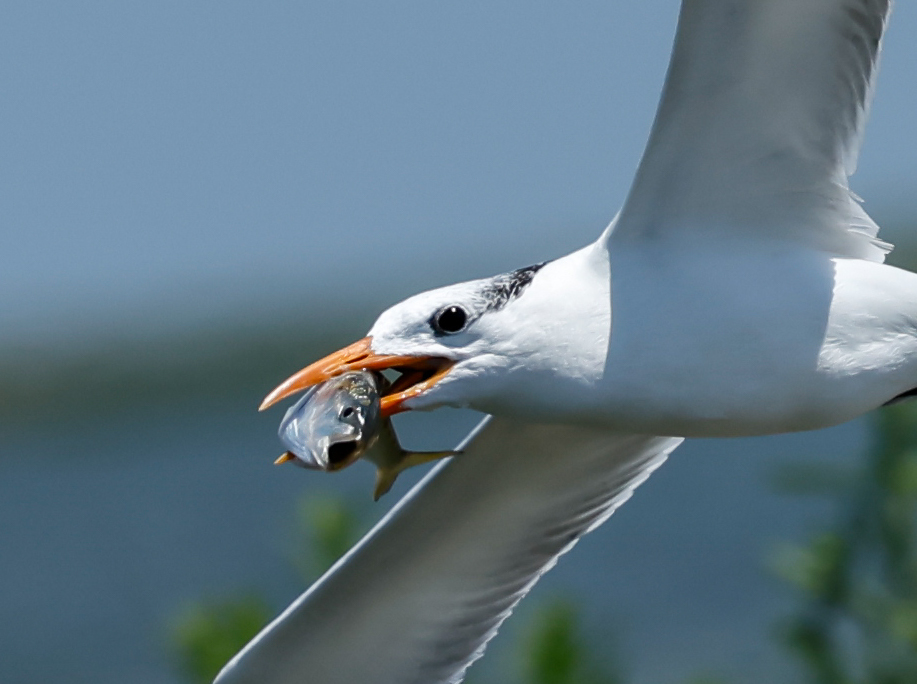Moving Woodpeckers 3

Bald Eagle Purple DC Jan 1, 2018
January 5, 2018
Virginia Peregrines have Mixed Year in 2017
January 8, 2018By Bryan Watts | bdwatt@wm.edu | (757) 221-2247
January 6, 2018
“She’s a peeker,” I whispered over the radio to let Bart Paxton know that the bird was looking out of the cavity entrance. Bart was hidden in camouflage near the base of the cavity tree within The Nature Conservancy’s Piney Grove Preserve (PGP). We had arrived on site around 4:30pm to measure the cavity height, position the net pole near the roost tree and set up for the capture. The bird flew to the tree from the north at 5:05, did some maintenance work on resin wells, and entered the cavity at 5:13 with no inkling of the capture plan.
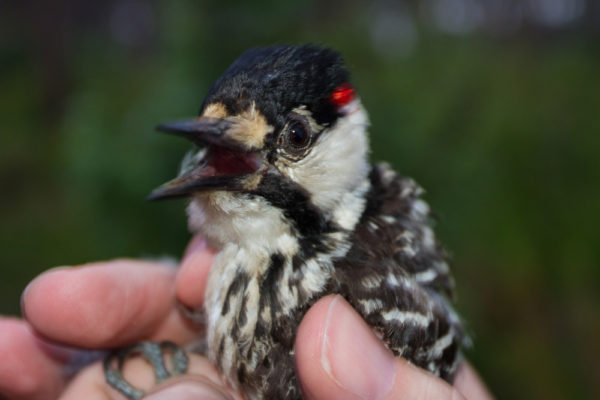
Young male red-cockaded woodpecker ready for transport to GDSNWR. Photo by Bryan Watts.
Bobby Clontz and I were set back in the woods like a sniper with a spotting scope to monitor her activity and to direct Bart when the coast was clear. The bird popped back up to the entrance every few seconds to peer out and scan the surroundings, but eventually settled down for the night. Bart eased into position and slowly raised the net pole to 38 feet and placed the net over the cavity. In seconds the bird shot out calling into the net, fluttered down into the bag and was lowered to the ground. A collective sigh of relief after we confirmed the ID and had the bird safely in the transport box.
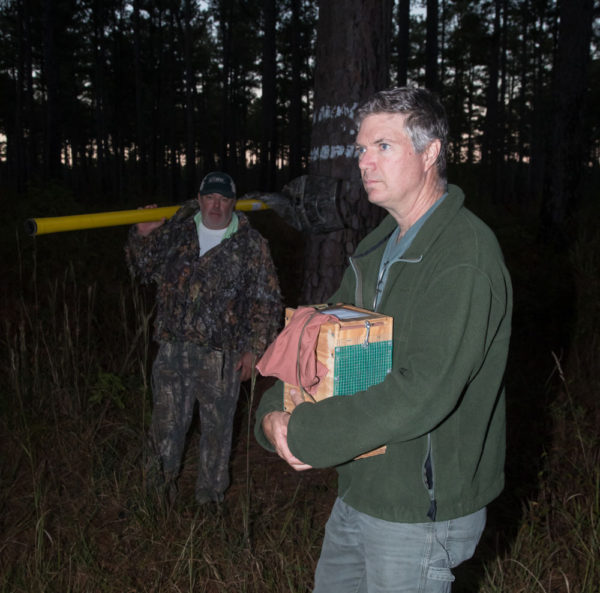
Bobby Clontz (rt) holds a transport box with a young female red-cockaded woodpecker while Bart Paxton (lft) secures the telescoping net pole. The bird is one of two captured within Piney Grove Preserve to be transported and released within the GDSNWR. Photo by Bryan Watts.
Less than a mile away, Fletcher Smith, Kevin Rose, Jen Wright, and Audrey Boraski were in another breeding site attempting to extract a young male from its roost cavity. By 6:20 they had the bird secured and by 6:40 we were on the road to the Great Dismal Swamp National Wildlife Refuge (GDSNWR). We would walk through the woods, climb the trees, place birds in artificial cavities, screen the birds in, and clear the gear out of the site by headlamp. Before dawn we would quietly walk back into the site, wait for signs of the birds stirring, pull the screens and release the birds into their new habitat.
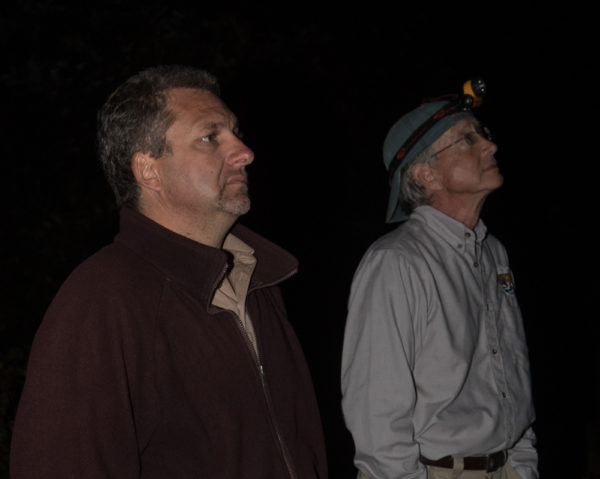
GDSNWR manager Chris Lowe (lft) and national red-cockaded woodpecker coordinator Will McDearman (rt) look on as a woodpecker from Carolina Sandhills National Wildlife Refuge is placed in an artificial cavity. Photo by Bryan Watts.
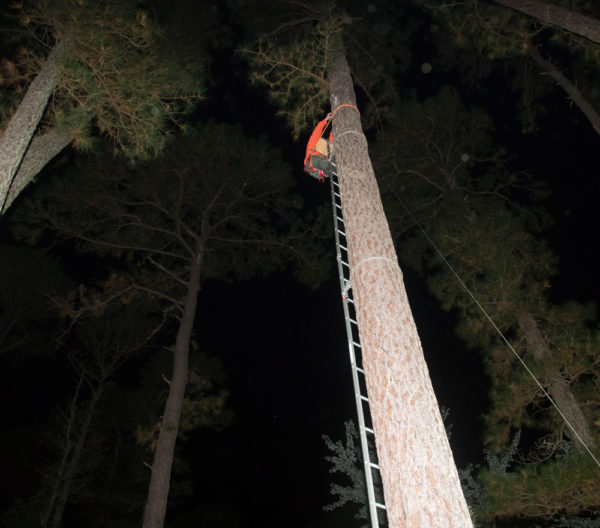
Kevin Rose from Virginia Department of Game & Inland Fisheries places a woodpecker in an artificial cavity for release within GDSNWR the following morning. Photo by Bryan Watts.
The successful movement of these two birds represents the first translocation of red-cockaded woodpeckers from PGP (itself a small recovering population) and the last birds to be moved to the GDSNWR in 2017. Three weeks earlier, with a much larger group of biologists, we successfully moved eight woodpeckers (including four males and four females) from the Carolina Sandhills National Wildlife Refuge to the GDSWNR.
2017 is the third consecutive year that woodpeckers have been moved into the GDSNWR in an effort to establish a second breeding site in Virginia. Eight birds were moved in 2015 and ten birds were moved in 2016. In all, 28 woodpeckers have been meticulously monitored, captured, transported, and ultimately released from artificial cavities within the refuge. All birds have been released successfully.
Update on the status of GDSNWR woodpeckers
CCB biologists and refuge staff began a survey of woodpeckers on the GDSNWR in early December 2017. The survey systematically roosted all recruitment clusters and artificial cavity trees over a period of several days and identified all birds using the sites. 2017 was a good retention year with six of the ten birds that had been moved earlier in the fall found roosting. A very good sign was that both of the females produced within the GDSNWR during the breeding season were still present. The 11 birds identified included four males and seven females, setting up the possibility of four breeding pairs for the spring. We will conduct another headcount in April to assess who is still standing as the birds move into the breeding season.
It takes a village
The successful movement of woodpeckers is an enterprise with a lot of moving parts that requires a large effort. The work begins in the early fall when target and backup birds are identified and roosted to determine target trees for capture. In the run up to movement night, birds and trees are reconfirmed. Artificial cavity trees within GDSNWR must be cleared and screened to prepare them for receiving birds. Over the past three years the effort has included the work of dozens of biologists and volunteers associated with a large consortium of agencies and organizations including the Great Dismal Swamp NWR, Carolina Sandhills NWR, SD Hamilton Noxubee NWR, Okefenokee NWR, two USFWS ecological services offices, Jay Carter and Associates Inc., Virginia Department of Game & Inland Fisheries, The Nature Conservancy, and The Center for Conservation Biology. The effort has been lead by the national red-cockaded woodpecker recovery coordinator, Will McDearman.

